The Moroccan flag is a vivid emblem, encapsulating the unique blend of tradition and progress that defines the nation. This flag eloquently portrays Morocco’s journey with its distinct design, bridging its storied past with modern ambitions. This symbol transcends mere representation, offering a glimpse into the country’s soul, shaped by a rich cultural tapestry and a forward-looking vision.
Flag of Morocco
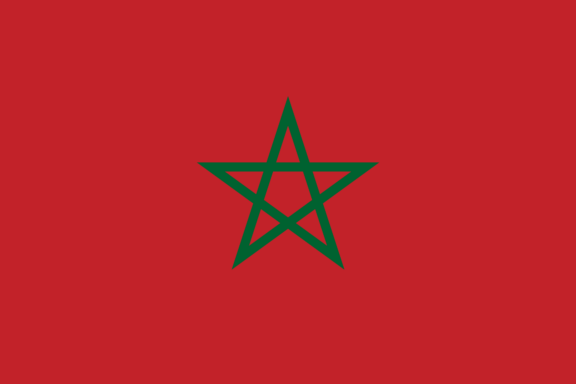
The Moroccan flag features a striking design with a deep red field and a central green pentagram, the Solomon’s Seal. This minimalist yet impactful design is significant in the nation’s identity, reflecting its historical legacy and spiritual beliefs.
The pentagram, a key symbol in Islamic tradition, stands prominently against the red backdrop, embodying a historical and contemporary connection.
Flag of Morocco: Color Palette
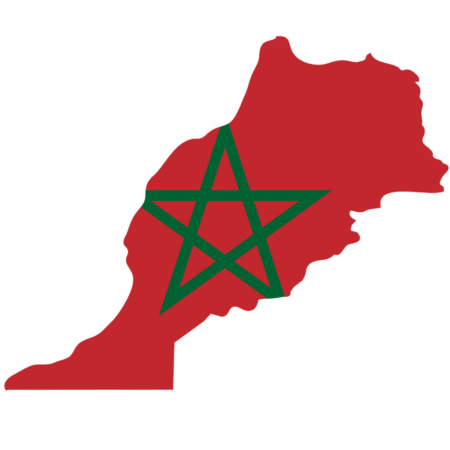
Morocco Flag Emoji: 🇲🇦
The color palette of Morocco’s flag, consisting of vibrant red and lush green, forms a visually striking and symbolically rich combination. These colors are deeply rooted in the nation’s cultural and historical context and carry distinct meanings that will be explored in the following sections.
Meaning of Each Color
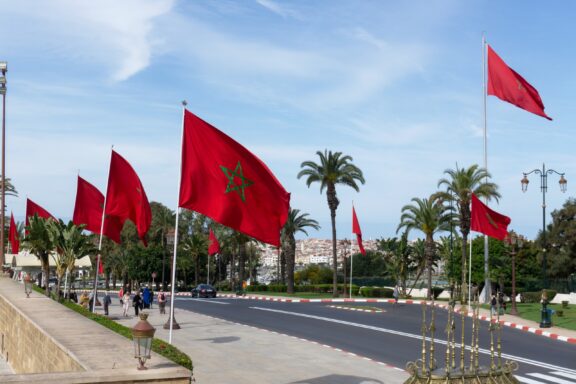
Red
The dominant red background of Morocco’s flag is steeped in historical and cultural significance. Red has been associated with the Alaouite dynasty and symbolized the Sharifian Empire ruled by Moroccan sultans. Historically, this color represents hardiness, bravery, strength, and valor.
It reflects Morocco’s rich dynastic history, stretching back to the Idrisid Dynasty in the 8th century, where King Idris I carried a red banner. Red flags and banners became symbols of the ruling Alaouite sultans and the Sharifian Empire during the 16th to 19th centuries.
Green
The green pentagram at the center of the flag, known as the Seal of Solomon, has deep roots in Moroccan culture. The green color is emblematic of love, nature, and Islam, reflecting the country’s Islamic identity. The five points of the pentagram symbolize the pillars of Islam:
- Profession of faith (Shahada)
- Prayer (Salat)
- Alms (Zakat)
- Fasting (Sawm)
- Pilgrimage (Hajj)
This protective emblem represents power and good fortune in Moroccan culture. The green pentagram combines these layers of meaning, encapsulating Moroccan history, culture, identity, and faith.
Coat of Arms of Morocco
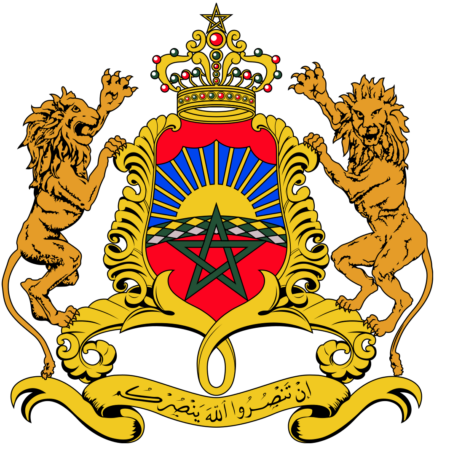
The Coat of Arms of Morocco is emblematic of the nation’s royal heritage and cultural depth. It showcases a harmonious blend of symbols that each tell a story of Morocco’s past and present:
- Shield with Green Pentagram on Golden Sun and Azure Background:
- Green Pentagram: Symbolizes the Islamic faith and the five pillars of Islam.
- Golden Sun with 15 Rays: Represents hope and a new era.
- Azure Background: May signify the sky or Morocco’s geographical position by the Mediterranean and Atlantic.
- Royal Crown: Positioned above the shield, highlighting the monarchy’s authority and status.
- Two Lions: Flanking the shield, the two lions symbolize strength, courage, and the royal lineage.
- Ribbon with National Motto: Below the shield, displaying the phrase “In Tansourou Allaha Yansouroukoum” (If you glorify God, He will glorify you), emphasizing the role of faith in governance and national identity.
Together, these elements weave together to narrate Morocco’s historical journey, royal heritage, and enduring traditions.
Historical Evolution and the Meaning Behind Changes
The Moroccan flag’s evolution mirrors the nation’s historical voyage and shifts in political power.

Originating from flags used by various ruling dynasties, the design evolved significantly in the 17th century, adopting a plain red field as its primary feature. This color choice symbolized the dynasty’s strength and bravery.
A pivotal change occurred in 1915 with the introduction of the green pentagram, the Seal of Solomon, by Sultan Yusef. This inclusion was more than a design alteration; it infused the flag with profound Islamic symbolism, connecting it deeply with Morocco’s spiritual heritage.
Throughout periods of foreign influence and during the French and Spanish protectorates, the flag’s core design remained unchanged, symbolizing Morocco’s unyielding character and resilience.
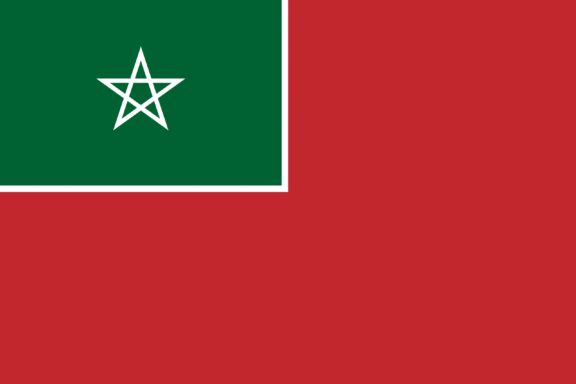
Post-independence in 1956, the flag continued with its established design, maintaining its historical and cultural connections while celebrating a new era of sovereignty.
The Moroccan flag’s design evolution is a narrative of the country’s enduring legacy, reflecting historical changes while preserving essential elements that symbolize the nation’s continuous journey and cultural depth.
Overall Symbolic Meaning of the Flag
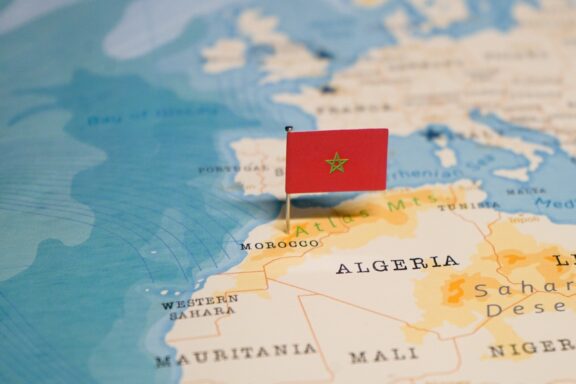
The Moroccan flag, with its distinctive design, serves as a potent emblem of the cohesion and enduring traditions of the nation. Beyond its components, the flag embodies Morocco’s rich historical evolution, cultural richness, and spiritual values, visually symbolizing the nation’s resilience over time and mirroring its strong sense of communal belonging.
Similar Flags to the Flag of Morocco
The Moroccan flag shares similarities with the flags of Turkey and Tunisia, mainly due to the incorporation of Islamic symbols and a dominant red background.
Turkey
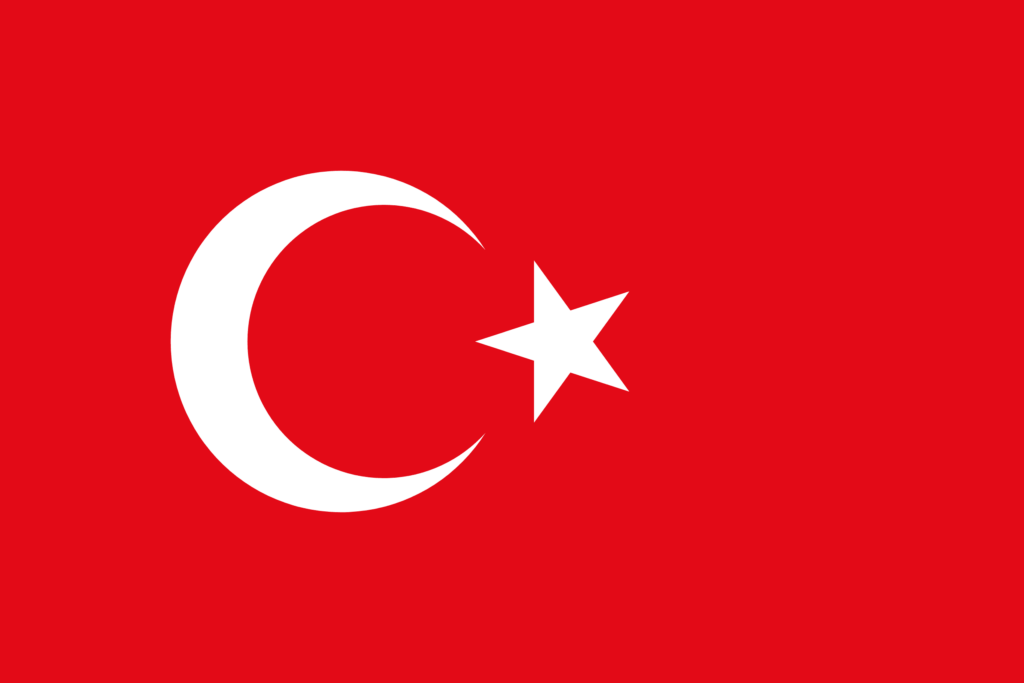
The Turkish flag features a red background with a white star and crescent, symbols deeply rooted in Islamic and Ottoman heritage. The use of the red background is significantly similar to the Moroccan flag.
Although used in different historical and cultural contexts, the red color in both flags serves as a unifying element that reflects the strength and resilience of these nations.
Tunisia
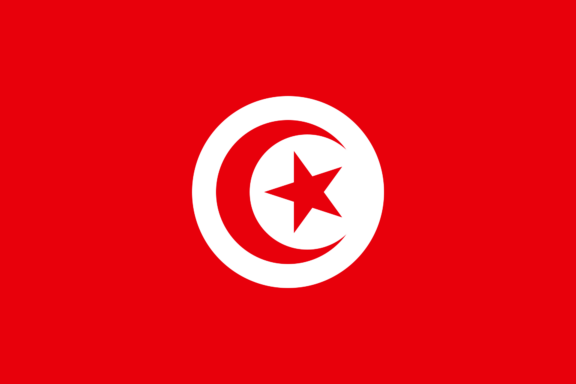
Tunisia’s flag, like Morocco’s, prominently features a red background. It includes a white circle in the center, where a red crescent encircles a red star.
This design choice reflects Tunisia’s Islamic heritage, similar to Morocco’s use of the green pentagram. The red background is a common thread, symbolizing these nations’ historical strength and vitality.
Final Thoughts
The flag of Morocco, with its unique design and symbolism, holds a special place among the world’s flags, symbolizing the nation’s distinct identity and heritage. For Moroccan citizens, it is not just a national emblem but a source of pride, reflecting their shared history, culture, and aspirations.
Image Sources and Copyright Information
- Moroccan Flags Lining a Boulevard in Rabat: © Oleksandr Matsibura/Shutterstock